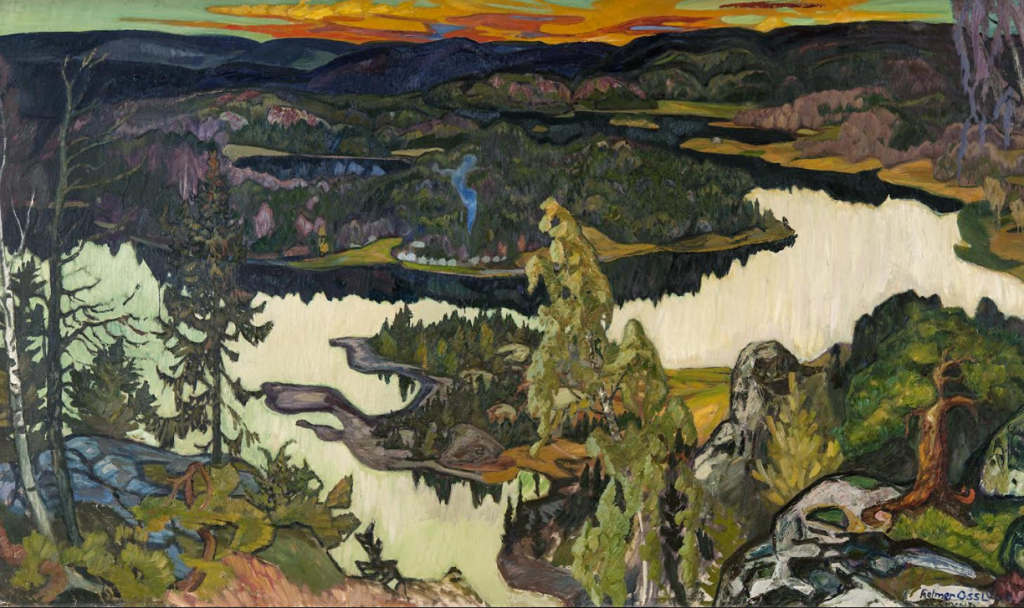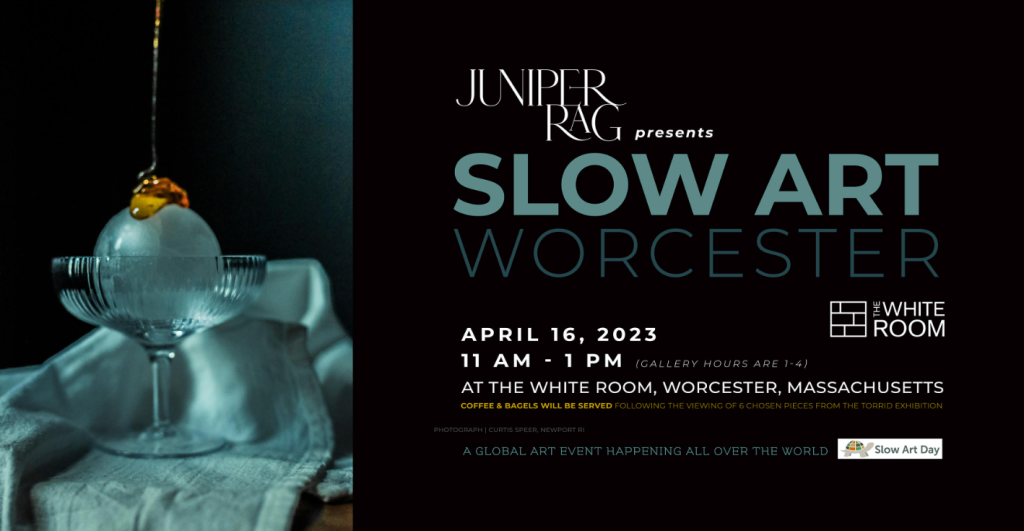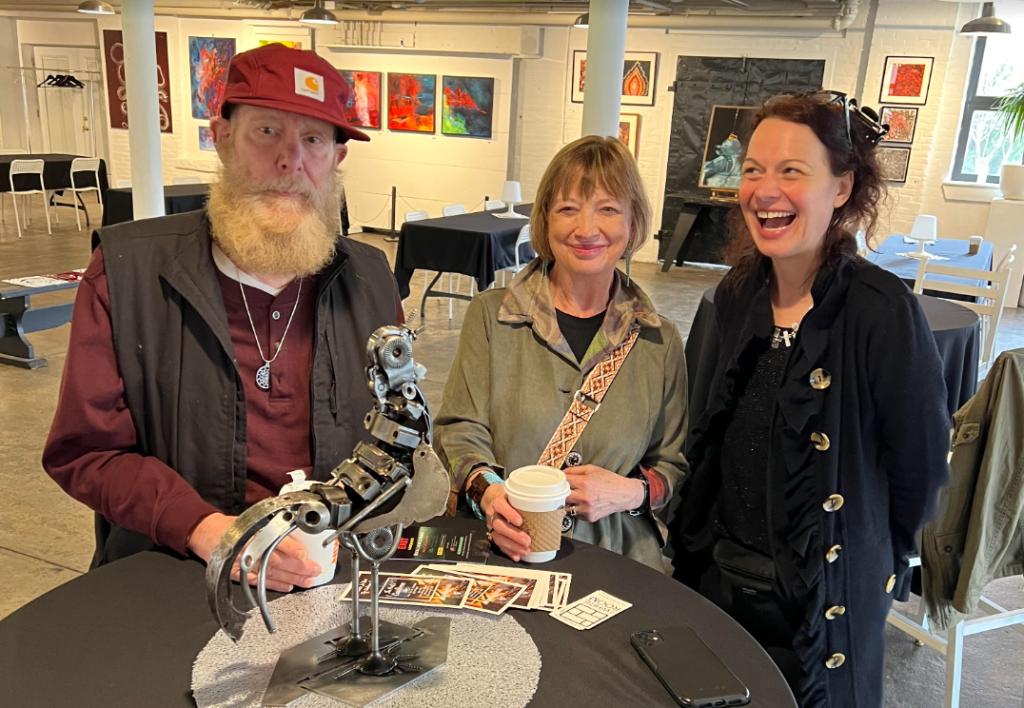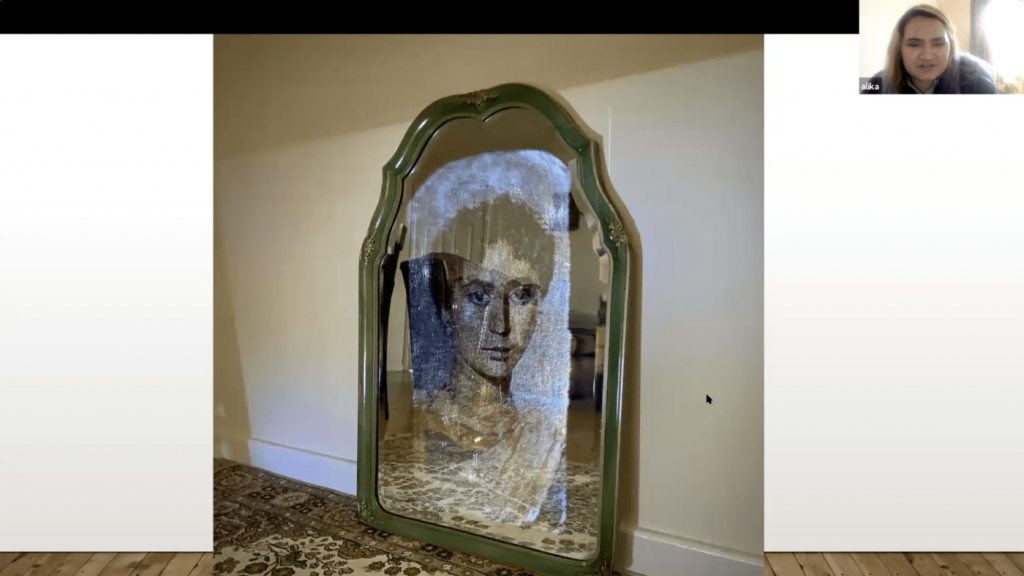For their first city-wide Slow Art Day, the town of Mason City, Illinois lined up three venues to host artwork events for Slow Art Day: the public library, Reimagine Mason City Foundation, and the Arlee Theater.
All three are local nonprofits who are actively involved in youth services and the arts. Even though Mason City is not large enough to need a stop light (with a population of 2500), they still make sure to celebrate local artists. This year’s featured works included pieces from local artists who have passed on, as well as works from four other Central Illinois artists with various ties to Mason City. Most of the entries were paintings, with one sculpture.
This year’s local artworks were:
- Unknown titled piece by Andrea Maxson
- “Colorful Flowers” by the late Helen Kim
- Two untitled pieces by Anastasia Neumann
- “Protection” and “Old Warrior” by Rick Kehl
- Unknown titled piece by the late Mary Price
- Unknown titled piece by the late Mary K. Mangold
- “Arcturian Landscape Study in Aluminum” by Paige Price









On Slow Art Day, the artworks were divided across the three selected locations, and tips for looking at art slowly were provided at each venue.
- The public library showed their pieces in a special exhibit.
- The Reimagine Mason City Foundation hosted a pop-up coffee shop where their works were displayed.
- And lastly, the Arlee Theater projected digital versions of all of the works onto the big screen prior to the evening’s show (we have seen several theaters participate over the years, and love this type of venue for slow looking!).
At Slow Art Day HQ, we love to see citywide events – and especially appreciate smaller towns who come together to celebrate the day. We also hope to see more movie theaters join the Slow Art Day movement.
We look forward to seeing what Mason City comes up with for Slow Art Day in 2025.
-Johanna, Ashley, Jessica Jane, and Phyl
P.S. Slow Art Day 2025 is coming up on April 5. If you have not done so, please register your museum, gallery, church, sculpture park or movie theater here: https://www.slowartday.com/be-a-host/




































